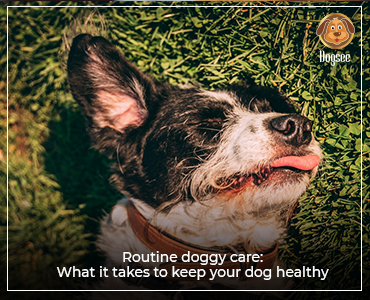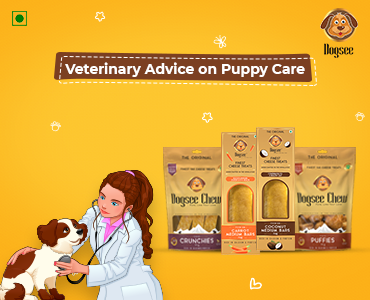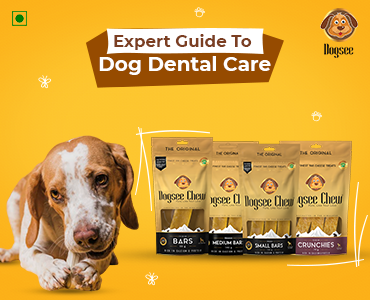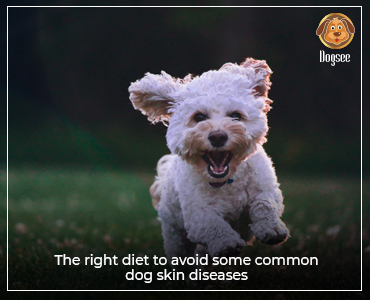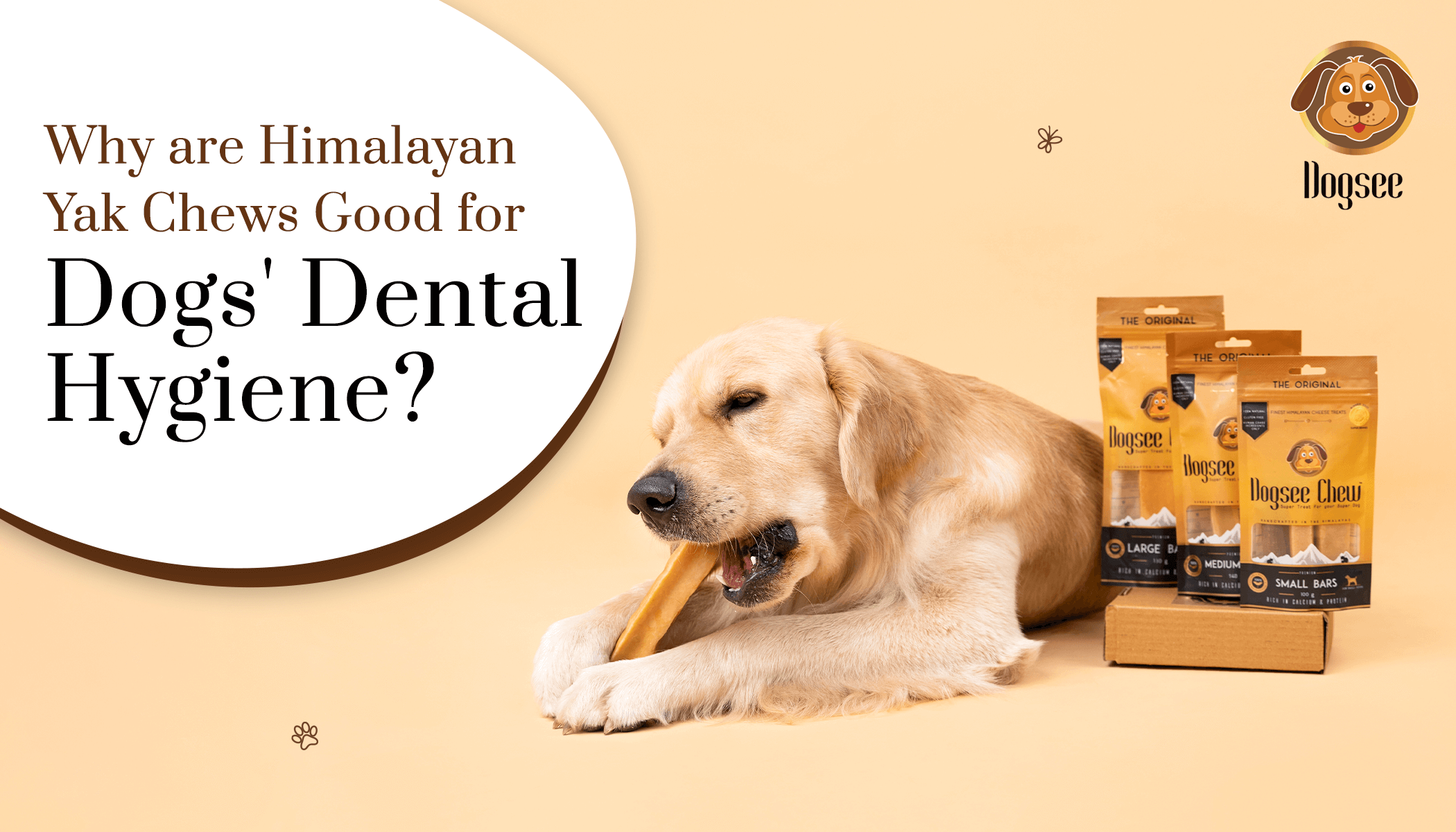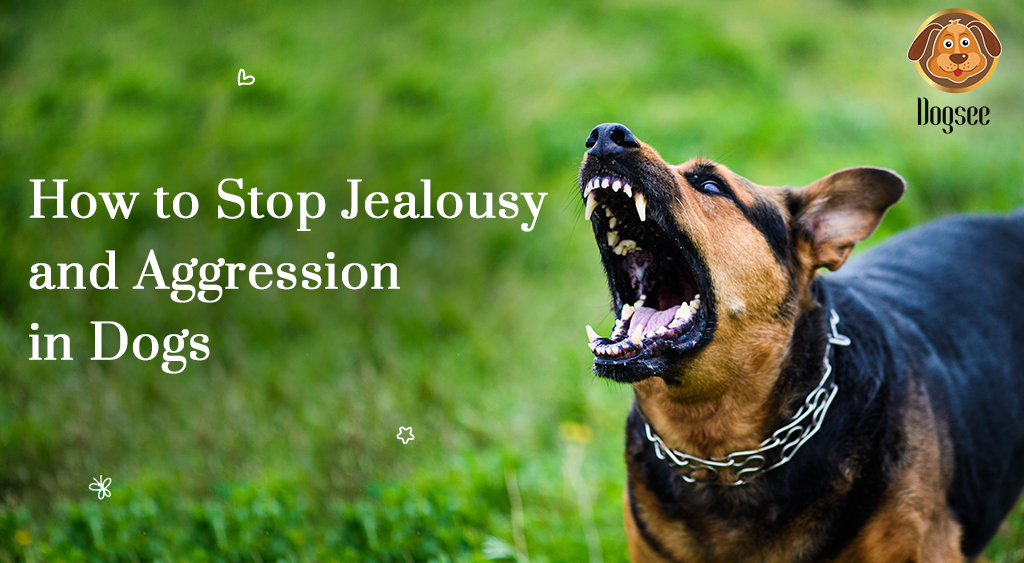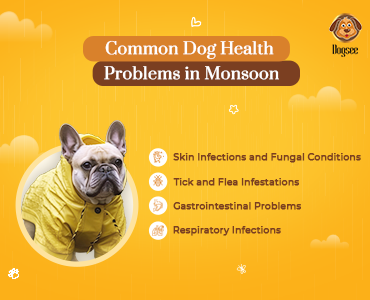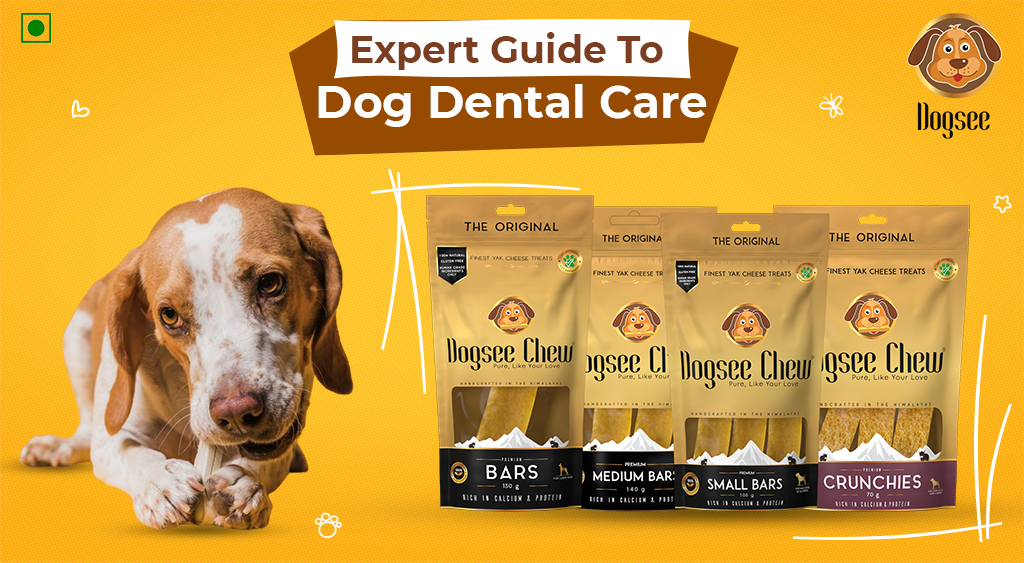
Do you know how to properly care for your dog’s dental health? When you think about most research articles that delve into pet health and care, they mostly refer to nutrition, regular veterinary visits, buying your doggos’ safe, non-toxic toys and treats etc. Most pet parents are unaware of the time and care it requires to ensure optimal dental health.
According to research, around 80% of dogs develop some kind of dental disease, particularly gum disease by the age of 2 or 3. Plaque is a sticky substance that forms when leftover food particles and saliva mix. It builds up on the teeth, and remains invisible to the naked eye - making it extremely hard for dog parents to catch. Left untreated for a long time, plaque transforms into tartar which can only be removed under professional vet care.
Moreover, even after a proper vet administered dental cleaning, plaque can start forming again in 12 hours due to the leftover food particles and saliva mixing again. With dental disease being one of the most widespread diseases among dogs, it’s extremely important for pet parents to be aware of proper dental care.
And, we are going to save you time from having to search all over the internet. In this article, we are going to give you a run down on everything you need to know to ensure excellent dental health - from basic tips and signs to look out to proper treatment.
Taking Care Of Your Dog’s Teeth
Just like us humans, dogs need regular dental care - which contributes greatly to your doggos’ overall health. If their dental hygiene suffers, the whole system suffers - no matter how much effort you put into providing the best nutrition, getting regular vet checkups etc.
So when bringing your pet home for the first time, or if you’ve had a dog all this time, it’s important to start a dental care routine. It’s never too late to start building the habits - however, starting them young will make it much easier on you.
Dogs grow accustomed to things - similar to us. If you start cleaning their ears, brushing their teeth etc., they understand that it’s normal for you to do such things to take care of them and protect them. If you’ve had a dog whose ears or teeth have never been cleaned by you - and suddenly you make an effort to do so, it’s a foreign concept that is bound to trigger discomfort and lead to territorial behavior. It's not to say that it can’t be done - it just will require a lot of patience and practice from your end.
Brushing your Dog’s Teeth
First things first, you need to gather up the essentials - toothbrush, and toothpaste. You can find these at your local pet supply store - make sure you purchase a toothpaste made specially for canine. You may think “well what’s in toothpaste?” but human toothpaste actually contains some ingredients that are toxic to pets.
Once you have these supplies, it’s time to brush their teeth. It’s recommended that you brush your pet’s teeth 2 -3 three times a week in addition to an annual dental checkup.
If you’re new to brushing your dog’s teeth, start slowly over the course of a few days. and work your way up to brushing his teeth.
Day 1:
Start by pulling back your dog’s mouth and touching his teeth/gums with your finger, just so your dog can get used to this sensation. The goal here is to get your dog used to you touching around his mouth so don’t rush the process.
Day 2:
Repeat steps from Day 1 while adding another element: squirt a bit of toothpaste on your fingers and let your dog lick it.
Day 3:
Then, combine steps 1 and 2 - squirt some toothpaste on your fingers and start rubbing them gently - in a circular motion - to clean your dog’s teeth and make sure you get his gums!
Day 4:
It’s now time to introduce his toothbrush. You want to make sure that your dog doesn’t see this as a toy to chew on. So carefully and slowly, have the toothbrush touch his teeth and gums.
Day 5:
Your dog should be used to you touching his teeth, and the sensation of the toothpaste and toothbrush by now. Combine steps 2 and 3 - add some toothpaste on the toothbrush, and gently start going over his teeth and gums. Do this 2-3 times a week to keep the plaque away.
Throughout the process, make sure you add some positive reinforcement. Every day, reward your dog with healthy treats if you were able to complete your goal and if he/she remains calm until you’re finished. Dogs’ brains register something as “positive” when he/she is rewarded - so the more you reward - by positive affirmations or treats - the more your dog will let you repeat this behavior.
Take Your Dog To The Vet for Checkups
Even with your new at-home dental routine, it’s important to have regular vet checkups. Taking your dog to the vet for a thorough inspection of his/her dental hygiene should be in addition to at-home care, not something that can be compensated for with professional service.
Take yourself for example - as humans, we are supposed to brush our teeth twice a day. We still go to our dentists to get our teeth professionally cleaned, whitened, and for anything else we might need done.
Similarly, our dogs need professional care. As mentioned before, plaque, among other diseases, remain invisible to the naked eye - so it’s very easy for pet parents to overlook the buildup and think that our doggos’ teeth are clean. Your vet has the necessary tools and education to be able to catch diseases or buildup that you may have missed. With proper administration, you can take preventative measures to keep diseases at bay.
In addition to disease inspection, professional cleaning can also ensure that your dog’s dental hygiene remains optimal by reaching areas that you may be unable to. While it may be expensive, a thorough cleaning ensures that your poochs’ gums and teeth are extremely healthy and clean. By doing so, you’ll save your pooch a lot of discomfort later and can rest assured that your dog’s health is risk-free.
Tips for Ensuring Excellent Dental Health
Regularly check your dog’s teeth: When we, as humans, develop any sort of disease, we feel and show pain. Dogs, however, are known to not show any signs of pain, no matter how much chronic pain they are in. As pack animals who once habited the wild, they have been predisposed to hiding pain - as they see it as a vulnerability and weakness.
So waiting around for your dog to start whining or showing “signs” is not going to be beneficial. There are other ways, however, to ensure that your dog’s dental hygiene is excellent.
Check your dog’s breath: Smell your dog’s breath. Now, your dog’s breath is never going to smell minty fresh - and that’s okay, it’s normal! However, if you notice that your dog’s breath is especially foul and he/she seems to be experiencing a loss of appetite, vomiting or excessive drinking/urinating, it’s probably a good time to take your doggo to the vet and have him/her checked for any diseases.
Check his gums and teeth: When you’re brushing your dog’s teeth, or even once a week, do a routine check of his gums and teeth to make sure there are no signs of swelling, bleeding or discoloration - your pooch’s gums should be pink, not white, red or brownish.
Signs to Look For: When doing routine checkup at home, it’s important that you know what you’re looking for to understand and determine if your dog is indeed developing some sort of disease or in pain. Because at the end of the day, the earlier you catch it, the sooner you can treat it, and the better your pooch will feel.
Here are a list of things to pay attention to at-home to determine if he/she might be experiencing any oral health issue:
Look for discolored teeth and gums. If you notice any brownish/yellowish color on the teeth, it’s probably tartar (calculus) caused by plaque buildup.
Smell your dog’s breath for any foul odor. If this odor persists even after regular cleaning, it’s time to take your pooch to the vet.
Look for any signs of bleeding. Notice if there are any blood spots in his water bowl, or any signs of reddish color on his gums/teeth when you examine him/her.
Pay attention to your pup when he/she is playing with a chew toy. Does he/she whine or cry when playing or biting a chew toy?
Check for any signs of lumps, swelling or bumps inside your dog’s mouth.
Pay attention to your dog’s appetite. Does your dog suddenly seem uninterested in his food?
Notice if your dog seems resistant towards toothbrushing or you touching his mouth, gums or teeth. If your dog normally lets you touch these areas without any trouble, chances are your touch is causing an unpleasant sensation or discomfort - hinting towards possible oral disease.
Check for signs for loose teeth or even missing teeth. While it is normal for puppies to lose their teeth, you need to be extra careful to note these changes in your young or adult dog with mature teeth.
If you notice any of these signs when examining your dog, or spending time with your pooch, immediately take him to the vet as your little one might need urgent care.
Common Dog Dental Problems
When it comes to pet health, the more you know, the better care you can provide for your pet. By knowing the types of oral problems your dog may experience, you can better determine if/when your dog needs to be taken to the vet immediately.
Periodontal disease is the most common dental disease among dogs, with approximately two-thirds of dogs contracting periodontal disease by the time they’re three years old. It is an inflammation of the tissues between the tooth and the gum. They usually start as gingivitis but when left untreated for a period of time, spread further into the teeth, causing tooth pain and destroying the bone. Over time, the spread of the infection leads to the tooth getting loose, and falling out.
Gingivitis is an inflammation of the gums. It is caused by bacterial infection as a result of plaque buildup, and is characterized by poor dental hygiene followed by bad breath. The inflammation often results in bleeding and swelling of the gums.
Stomatitis is a severe form of gingivitis that usually affects the whole mouth - tongue, lips and other soft tissues. It can lead to a loss of appetite due to its excruciating pain.
Halitosis is essentially bad breath caused by tartar and plaque-buildup. It can pose a serious threat to your dog’s overall health as the bad bacteria gets into the bloodstream and spreads to the other organs. The best treatment to cure halitosis is regular brushing of your dog’s teeth as recommended by the vet.
Proliferating gum disease also known as Gingival Hyperplasia is a proliferation of gums that grow over your dog’s teeth. The common symptoms of this gum disease is excessive drooling, loss of appetite, halitosis and thickness/length of the gum.
Mouth tumors are masses that occur in and around the dog’s mouth including the gums, tongue, and lips. Common symptoms include loss of appetite, halitosis, excessive drooling, swelling and bleeding. Mouth tumors may be malignant but in order to confirm, your vet needs to perform a biopsy, and later surgically remove the tumor.
Salivary cysts is the most common salivary disease in dogs, and is characterized by swelling around the neck or near the jaw. The saliva and mucus lead to fluid accumulation that gradually develops into an enlarged mass near the jaw or neck area. It can lead to difficulty in breathing, loss in appetite, bleeding, difficulty eating or swallowing. The fluid accumulation/mass is usually, however, painless but can lead to a series of infections.
Tooth Abscess can be broken into two different kinds : carnassial tooth abscess and periapical abscess.
Carnassial tooth abscess is caused by bacteria that reaches the root of the upper premolar tooth through the bloodstream. It’s extremely painful for the dog, and can lead to swelling, fever, and loss of appetite.
Periapical abscess occurs when pus forms in the tissue around your dog’s teeth. It can spread further if not treated immediately. Common symptoms include hyper sensitivity when eating, swelling, halitosis, and swollen gums.
Cavities are less frequent in dogs but nevertheless can still form from bacteria on the surface. You can spot a cavity by looking for black, decaying teeth or softened enamel. Cavities can cause a lot of pain, and lead to organ disease if the toxins are released into the main bloodstream - however this is in the extreme case. The most common treatment for cavities is tooth extraction.
If you think your dog has any of these diseases, or you start seeing signs of the symptoms mentioned above, immediately take your vet to the doctor. It is also good to know that some breeds are more prone to developing certain oral diseases than others. Small dogs, for example, develop oral disease more often due to the close proximity of their teeth, and because pet parents normally feed them more frequently than medium or large-sized dogs.
Nutrition: In addition to cleaning, what you’re feeding your dog plays an important role in your dog’s overall health, including dental health. The best way to ensure long-term benefits to your pooch’s health is by ensuring nutrition from the “inside-out” along with the necessary additional care recommended by your vet.
If your dog suffers from any oral health disease, or even seems to be prone to developing oral diseases frequently, talk to your vet. They might be able to recommend pet food that is specifically formulated to keep any plaque, and tartar buildup away - and this can help your pooch stay from developing any serious illnesses as tartar and plaque buildup are the common causes of most serious illnesses.
Alternatives to Brushing
Dental Wipes: Cleaning a dog’s teeth is no easy feat. It requires tons of patience, training and practice. Let’s say you’re a busy parent or let’s say your pet doesn’t let you brush his teeth long enough to get all the gunk out, you probably want an easier way to clean your dog’s teeth at the end of a long day. If this is the case, dental wipes are the next best thing to a toothbrush and toothpaste combo. They essentially work the same as any other cleaning wipes made for dogs. You simply rub the wipes against your pet’s teeth to remove any plaque.
Dental Treats & Chews: Dental Treats & Chews are a great alternative for when you either don’t have the time to brush your dog’ teeth or when your dog is being difficult. You can give them to your dog every day to help keep your dog’s mouth healthy.
Since dogs have a natural affinity to chewing, the repetitive chewing motion helps break down any plaque left on your dog’s teeth. Dental treats & chews also contain special enzymes that work to promote good dental health - removing plaque or tartar buildup, freshening breath and keeping your dog’s mouth clean.
There are a plethora of these dog dental treats and chew on the market, and they are advertised to be beneficial for both the dog and the parent. But beware, not all that are advertised live up to their claims. It’s equally important to check the ingredients and feed your dog natural treats that don’t contain any additives, preservatives or any toxic ingredients. By opting for natural dental treats & chews, you’re giving your little one’s exactly what nature intended.
To ensure that your pooch gets only the best treats and chews there are, we’ve narrowed down a list of dental chews and treats to help you out. These healthy dog treats and chews work great for all sizes, breeds and ages.
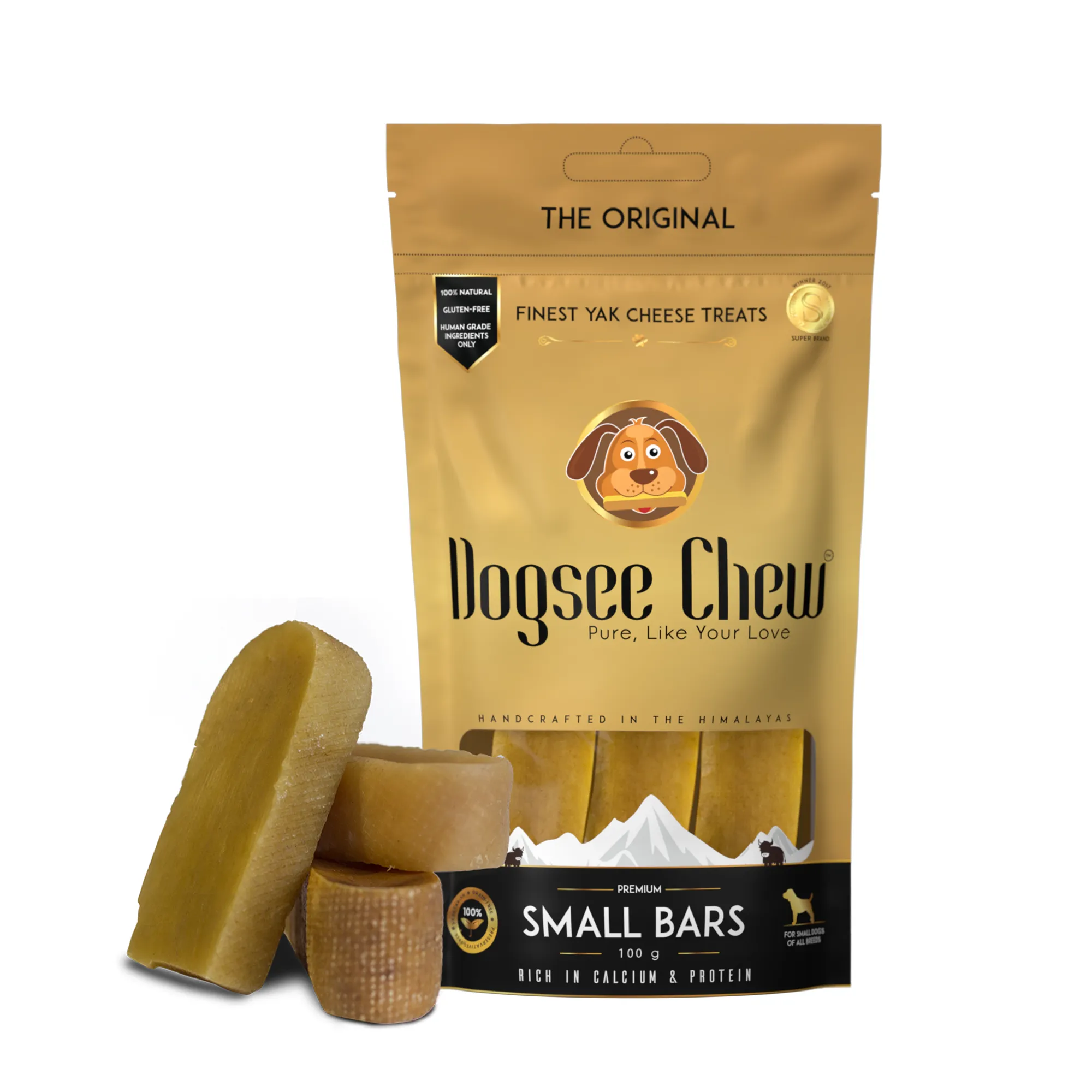
The rule of thumb in choosing the right dental chews for your pooch is to make sure that they are the right size - not too big or too small - and that they last a long while to really get the plaque and tartar off the nooks and crannies of your dog’s teeth.
Dogsee Chew Hard Bars checks off all the requirements. They come in 3 different sizes - large, medium and small - so your pet gets the right size chew. Additionally, these long-lasting dental chews are extremely effective in fighting against plaque and tartar, and keeping your dog’s breath fresh and clean.
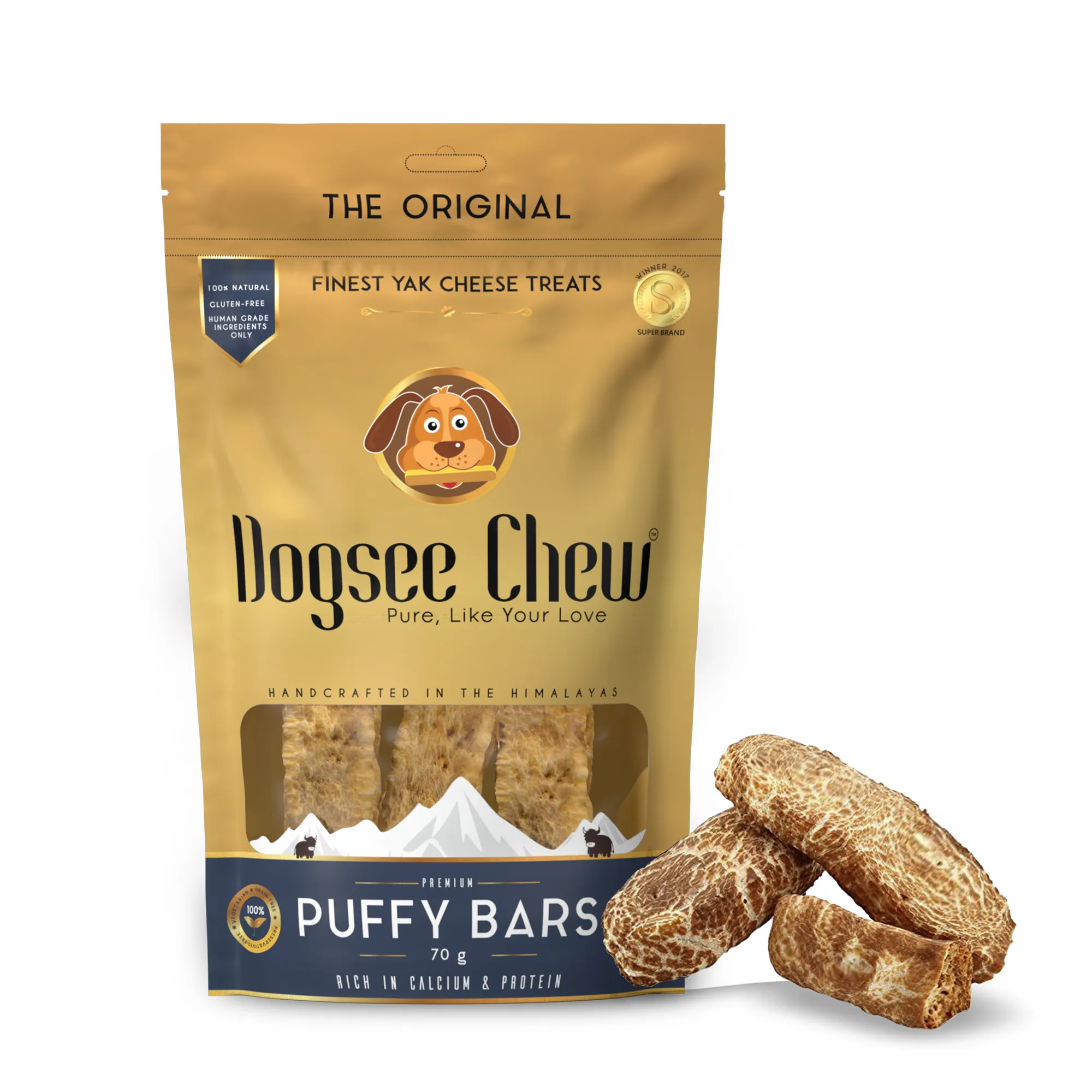
If you have a senior dog, you probably already have a tough time finding treats or chews that have just the right consistency and texture. With senior dogs, it’s likely that you’re starting preventative care and therefore, need treats/chews that are soft enough for them to chew. Dogsee Chew Puffy Bars are specially formulated for your senior doggos’ needs. These soft chew dog treats are made for older dogs who lack strong teeth and have a hard time chewing. They remove plaque and tartar, freshen breath, and contain all the necessary nutritional makeup your senior pet needs - they’re high in protein, low in fat and easy to digest and eat.

When it comes to dental diseases, small dogs and puppies are more likely to develop oral health issues than large/medium sized dogs - and this has to do with their feeding frequency and the proximity of teeth being so close to each other. If you’re a pet parent to a small dog or puppy, Dogsee Chew Crunchies are the best solution to improve your pups dental health. These soft chew puppy treats are great for teething, snacking while ensuring that your pup has fresh breath, and a clean mouth free of plaque and tartar. Additionally, they keep your poochs’ skin health and coat shiny - so you can’t ever go wrong with this one.
 HELPFUL0 people found it helpful
HELPFUL0 people found it helpful
Related Blogs
Subscribe to Our Blogs
and never miss on the latest update!








